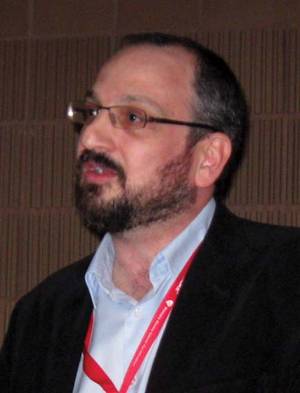Percutaneous closure of a patent foramen ovale in adults who’ve had cryptogenic stroke or embolism was no more effective than medical therapy alone at preventing a recurrent event, according to two separate reports published online March 20 in the New England Journal of Medicine.
However, one study may have been underpowered to detect a clinically relevant benefit with PFO closure, and secondary analyses of data from the second study suggested that PFO closure with an occlusive device might be beneficial, particularly in certain subgroups of patients.
The findings of these two large, international, randomized clinical trials have long been awaited with anticipation, because it has been unclear whether the benefits of closing a patent foramen ovale outweighed the risks. Observational studies and some meta-analyses have indicated a clear benefit with the procedure, while other meta-analyses and the only clinical trial that examined the issue to date have suggested that it leads to a poorer clinical course than medical therapy does.
Parsing the PC Trial
The first of the two current clinical studies, the PC Trial, was initiated 14 years ago and conducted at 29 sites in Europe, Canada, Brazil, and Australia. It involved 414 adults under age 60 (mean age, 44 years) who had a radiologically verified ischemic stroke, transient ischemic attack (TIA) with a cerebral ischemic lesion, or extracranial thrombolic event, all with no identifiable cause other than a PFO.
The study subjects were randomly assigned either to undergo percutaneous closure of the PFO using an occlusive device manufactured by the study sponsor, St. Jude Medical (204 patients), or to receive antithrombotic agents according to the discretion of the treating physician (210 patients), said Dr. Bernhard Meier of the cardiology department at Bern (Switzerland) University Hospital, and his associates.
The primary endpoint, a composite of death, nonfatal stroke, TIA, or peripheral embolism, occurred in 7 patients (3.4%) in the closure group and 11 patients (5.2%) in the medical therapy group, a nonsignificant difference.
"There were fewer strokes in the closure group; but overall, few patients had a stroke, and the difference was not significant," the investigators reported (N. Engl. J. Med. 2013;368:1083-91).
Thus, closure of the PFO using this method was no more effective than medical therapy at reducing the risk of recurrent embolic events or death.
However, the lower-than-anticipated event rate means that this trial may have been subject to a type II error, the investigators cautioned. Thus, "a clinically relevant benefit of the closure of PFO might exist, but we were unable to detect it."
Analysis of the individual components of this composite endpoint yielded similar results: The rates of recurrent stroke (0.5% and 2.4%, respectively) and of TIA (2.5% and 3.3%, respectively) also were not significantly different between the two study groups.
Similarly, analyses of important subgroups of patients showed that PFO closure was no more beneficial than medical therapy with regard to patient age (older or younger than 45 years), the presence or absence of septal aneurysm, the type of the index embolic event, or the presence or absence of a history of cardiovascular events.
There were 113 adverse events in 71 patients in the closure group (34.8%) and 120 events in 62 patients in the medical therapy group (29.5%). The rates of serious adverse events were similar between the two groups, at 21.1% and 17.6%, respectively. In particular, new-onset atrial fibrillation developed in 6 patients (2.9%) in the closure group and 2 patients (1.0%) in the medical therapy group.
In addition to the possible type II error, this trial was limited by its composite endpoint, which was not specific to the condition studied (embolic events). The study also had an unusually long recruitment period and a selected patient population, which may limit the generalizability of the findings. In addition, a lower-than-expected rate of patient retention might have caused attrition bias, and the clinical events committee "discounted potential primary-end-point events more often in the medical therapy group than in the closure group," Dr. Meier and his associates in the PC Trial said.
Showing RESPECT results
In the second trial, the RESPECT (Randomized Evaluation of Recurrent Stroke Comparing PFO Closure to Established Current Standard of Care Treatment) study, 980 patients with cryptogenic ischemic stroke and a PFO were assessed at 69 sites in the United States and Canada. They were randomly assigned either to undergo percutaneous closure of the PFO using an occlusive device manufactured by the study sponsor (St. Jude Medical) or to receive medical therapy alone.
The primary endpoint was a composite of recurrent nonfatal ischemic stroke, fatal ischemic stroke, or early death (within 45 days of randomization), said Dr. John D. Carroll of the University of Colorado Hospital, Aurora, and his associates.


